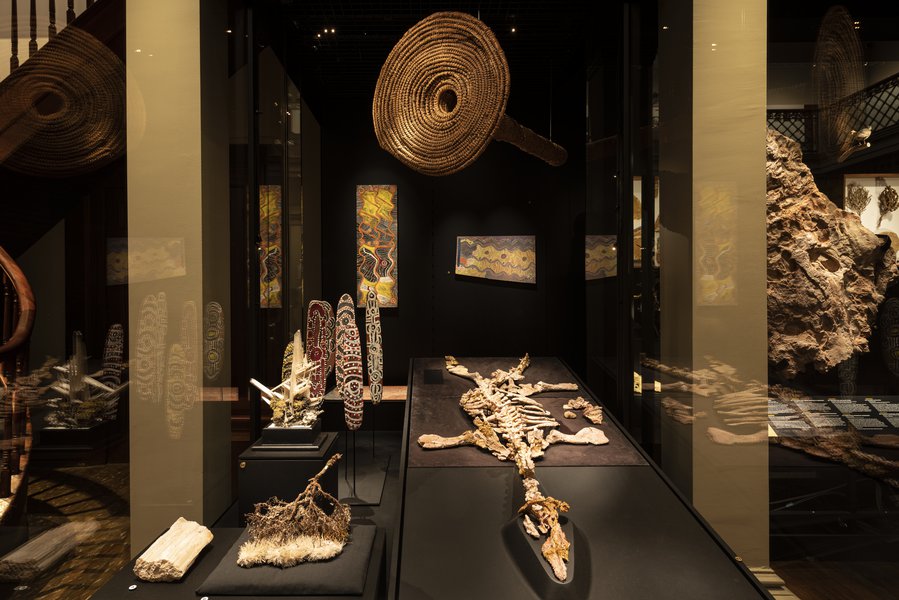The idea of the inland sea has a profound place in Australia’s imagination. Aboriginal water Dreamings revolve around its rising and falling. And a succession of colonial explorers laboured along rivers in search of it, eventually conceding it did not exist. Yet it once did.
This fossilised pliosaur, known affectionately as Eric after a song by British comedy team Monty Python, swam in a vast inland sea during the Cretaceous Period, about 120–100 million years ago. As the sea retreated, perfect conditions were created for Australia’s national gemstone – opal – to form. Eric’s bones – and the fish bones in his stomach – gradually turned to opal. Australia is the only place on Earth where opalised animal fossils have been found.
Eric was discovered in 1987 by opal miner Joe Vida. Hundreds of blocks containing fragments of fossilised bones were sent to the Museum, where they were painstakingly reconstructed in a process that took over 450 hours.
In 1992, Eric went on sale when the company belonging to Eric’s owners went into liquidation. A ‘Save Eric’ appeal resulted in many generous donations, giving Eric a permanent home at the Museum.
Eric is not the only treasure of natural history discovered in Australia’s mines. On the left, this cerussite specimen is considered by many to be the finest in existence. Found at Broken Hill prior to 1930, its bladed crystals are up to 28.7 cm long – the longest of any in the world. Cerrusite’s high lead content gives a brilliant sparkle to the dense crystals.
Behind the cerussite, these dance boards were made for a special performance at the Museum in 1982, and were the first pieces of Indigenous women’s art to be recognised as art by an Australian cultural institution. Made by members of the Papunya Tula Art Movement, the boards were carved by men before women painted them with important symbols. Dance boards are used by Warlpiri women in ceremonies related to women’s Dreaming. The women sing and dance with boards in both hands.

